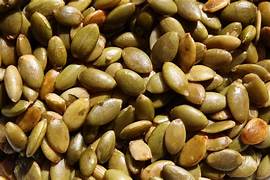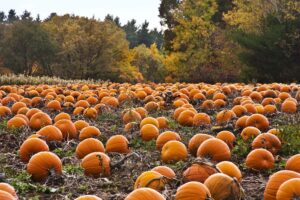
Pumpkin is familiar to all of us. With Halloween at the end of the year, pumpkins are the talk of the town. But the other characteristic of pumpkin is that it is drought tolerant, stable and versatile crop with high nutritional value. So could it be the superfood of the future? Pumpkin is the main ingredient in traditional ‘holiday pie’ sweets in the West. But pumpkin is very nutritious and is also used for its medicinal properties. As farmers face water shortages and erratic weather, local communities face economic deprivation, and the world’s number of malnourished due to rising pollution, the pumpkin is becoming a beacon of hope.
Climate change in the Sand Bars Desert, also known as the mini desert of Bangladesh, has resulted in flooding due to five months of heavy rainfall during the monsoon season.
Polluted river sediments contain highly toxic elements and make the land infertile. But lands eroded and silted by the river are now being used to grow pumpkins to combat food insecurity, unemployment and malnutrition.
In 2005, a project called “Pumpkins Against Poverty” was launched.
This initiative, which was started with the objective of purely practical action without any financial gain in mind, has now transformed into a profitable venture called ‘Pumpkin Plus’. “We are working with more than a thousand agri-entrepreneurs. We are exporting pumpkins to Qatar, Malaysia, Singapore and other countries and are trying to empower local people to diversify into commercial agriculture,” says Nazmul Islam Chaudhary, CEO of the company. “Locals earn an average of around 6,000 pounds ($7,340) over a five-month period.”
A promising crop in drought
Pumpkin is an ideal plant for drought tolerant and water scarce regions. Given their low water requirement and salinity tolerance, farmers in Bangladesh prefer to grow pumpkins in the sand belt to earn better profits than other crops.
Researchers at Turkey’s Selcuk University are trying to develop new varieties of pumpkin based on specific cultivars that could produce a drought-tolerant crop.
Due to the unexpected floods in Bangladesh, Chaudhary and his team faced many challenges. But Prince Matova, a plant breeder who works for Zimbabwe-based Mukushi Seeds, thinks that the ability of crops to adapt can be enhanced by various things.
“For example breeding for early onset or short seasons, adoption of regenerative farming practices, complementary use of irrigation systems, and increasing resilience of crops to withstand environmental shocks from a food security perspective.”
Does soil quality increase?
Not only are pumpkins suitable for growing in water-scarce regions, but they are also considered beneficial to the soil in which they are grown. Nasuna Florence, policy officer at the Advocacy Coalition for Sustainable Agriculture (ACSA), which works with Ugandan farmers to promote sustainable agriculture, is working on a project to reduce global warming by cultivating indigenous varieties of pumpkin. Pumpkins have been selected for the project “based on their ability to reduce soil erosion, reduce atmospheric nitrogen levels and improve soil health”.
The international scientific community is also showing interest in this crop. In Egypt, amid the growing need for water in the country and fears of shortages, scientists are trying to find and save seeds of pumpkin cultivars to combat food insecurity.
In the United Arab Emirates (UAE), a company called Elite Agro is producing pumpkins in greenhouses using European innovation and technology with high temperature-controlled methods to meet the demand of the UAE’s Thanksgiving season.
No wonder pumpkins have been researched so much – pumpkins are also nutritious. Pumpkin seeds contain antioxidants that help prevent various cancers. This nutritious, low-calorie, water-rich fruit is an excellent source of vitamin-A. This fruit is also rich in beta carotene, vitamin C, vitamin E, iron and folate etc. which strengthen your immune system.
A 2021 study by the University of Putra in Malaysia called pumpkins “the revolutionary crop of the era”. Pumpkin is “a balanced food source and a crop that requires less soil and adapts to any climate than other major crops.”

What is in pumpkin seeds?
Because pumpkin is rich in vitamins and nutrients, it is an ideal crop for regions where access to nutritious food is difficult.”Pumpkin fruits are an important source of essential vitamins, minerals and fats for people in developing countries,” says Sara Hind, an assistant professor in the Department of Crop Science at the University of Illinois Urbana-Champaign in the US.
Pumpkin seeds are high in magnesium and also contain tryptophan, an amino acid essential for infant growth and maintaining body muscle and protein.
Bife Foods, a Ugandan company, is a leading manufacturer of pumpkin products that can be used in soy, millet and rice flour. The company grows all its pumpkins on riverbanks damaged by soil erosion.
Pumpkin products manufactured by Buffet Foods are fed as porridge to meet the nutritional needs of children. In Kenya, vitamin deficiency in children is being addressed by mixing pumpkin with sorghum flour.
Challenges in pumpkin crop
Pumpkin can be a transformative crop for South Asia and Africa, insists Chaudhary.
It is also an ideal crop for tropical countries, as it lasts for a long time. Its storability and lack of cold storage properties make pumpkin a very suitable crop for poor countries and rural areas where electricity is not regularly available, says Prince Matova.
There are also some challenges in growing pumpkins. “Pumpkin plants depend on bees to pollinate their flowers, but other insects can be attracted to the flowers and damage the plants,” says Hind. But it seems that the benefits outweigh the difficulties. In some tropical regions of India, such as Goa, pumpkin vines are easily grown from pumpkin seeds in compost bins. All parts of this crop i.e. fruits, seeds, flowers, leaves and even young stems are used, thus making this crop more useful.

Pumpkin leaves are eaten in India and other South East Asian countries, as well as used as feed for livestock and marine life.
Easily grown in regions with extreme climates, this nutritious, almost every-part edible crop can be a lifesaver for people living in food-insecure regions.
Pumpkin fits well in the four criteria of food security laid down by the Food and Agriculture Organization of the UN – accessibility, availability, utilization and stability.
Embracing pumpkin as a superfood is the only way to combat global warming and feed a growing world population with hearty, nutritious food.